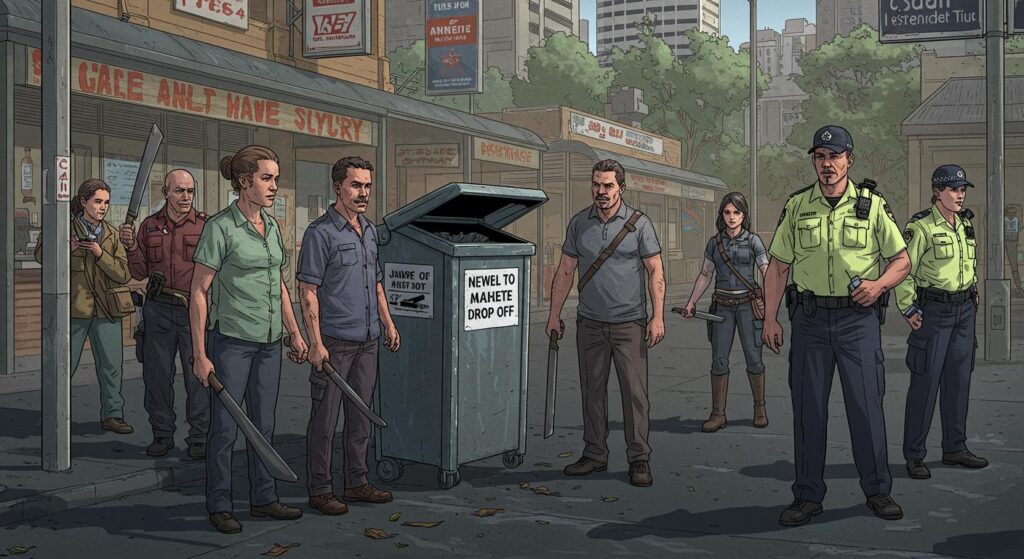Every now and then, the mechanics of modern democracy get crosswired with the internet’s fondness for wild conjecture, and the resulting sparks are—if nothing else—oddly illuminating. The saga of Elsie Kipp, a small but tenacious character in the Alberta federal byelection, has become a footnote in that ongoing narrative: how easily mistaken identity can fire up a storm of speculation, and how satisfyingly normal the truth often is.
A Mix-Up for the Ages: Mistaken Identity, TikTok Edition
To set the stage, The Canadian Press documents how, just last week, social media was sent into a minor frenzy by a TikTok video that confidently suggested Elsie Kipp, whose name appeared on the ballot for Alberta’s Battle River-Crowfoot federal byelection, was actually deceased. The theory rested on the unsteady foundation of an obituary—for another Canadian woman with a matching name. As outlined in the report, this leap of logic inspired users across TikTok and X to question Elections Canada’s very ability to ensure the living are, indeed, the ones running for office. Because nothing says “trust in the system” quite like taking a viral clip as gospel.
The Canadian Press highlights that the theory quickly snowballed, prompting online critics to scrutinize candidate vetting and speculate that ballot appearances might not be above the influence of grave misunderstandings. The essential question: had a ghost slipped through the cracks in Canadian bureaucracy, or was something more mundane afoot?
“I’m Still Here”: Elsie Kipp Speaks, Not from Beyond
For anyone rooting for the presence of spectral candidates, the story takes a disappointingly rational turn. In a phone interview with The Canadian Press—conducted via the very-much-in-this-world medium of telecommunications—Elsie Kipp stated she was “very much alive.” She further explained that her entry into the byelection was part of the Longest Ballot Committee’s stunt: a group devoted to protesting and drawing attention to electoral reform by fielding an almost comically crowded ballot. Kipp told the outlet that not only did she undergo a diligent vetting process, she was required by Elections Canada to provide identification, submit documentation, and take a candidate’s oath on camera. For clarity, that’s an actual oath, administered over video conference, complete with documentation—a process soundly designed for the living.
In details cited by The Canadian Press, Elections Canada confirmed all ballot candidates have to satisfy the requirements of the Canada Elections Act, including furnishing the returning officer with valid government-issue photo ID—a driver’s licence or Canadian passport, for example—and signing a legal declaration in front of an official. Notably, candidates may submit their forms over video conference, echoing Kipp’s own experience, but no supernatural registry was referenced.
Kipp, whose home is outside Hope, B.C., acknowledged the quirky optics of running in a riding where she doesn’t reside. Her intent, as described in her own words to The Canadian Press, is to prompt the public to question why outsiders can appear on local ballots—“The reason I put my name forward was so people would say, ‘Why would you do that? You don’t live there?’ and I would say ‘Yes, that’s interesting.’” As protest tactics go, it’s somewhere between performance art and applied civics, and Kipp freely admits that she neither expects nor wants votes. The outlet also notes she characterized her candidacy as a means to spotlight the “arrogance” of running in communities one doesn’t inhabit, an irony likely not lost on anyone tending to both the living and legislative details.
Sympathy and the Surreal: Unintended Consequences
Amidst the mild chaos, Kipp expressed sympathy for the family of the late Elsie Kipp, whose obituary became unwitting fuel for conspiracy. As reported by The Canadian Press, she remarked that while the only connection was a shared name, it was “unfortunate that conspiracy theories can take off so easily—especially when people are being intentionally misled using something as sensitive as someone’s passing.” This is the sort of collateral absurdity the internet serves up with distressing regularity: a protest candidacy meant to highlight one oddity is swallowed by another, as the digital grapevine distorts and magnifies.
Grounding things further, The Canadian Press outlines the context: this is a riding not unaccustomed to drama. Conservative Damien Kurek had secured the seat comfortably before resigning, explicitly to allow Pierre Poilievre—who lost his Ottawa Carleton seat—a pathway back to Parliament. Electoral musical chairs are, apparently, alive and well. Compared to stories of mistaken posthumous candidacies, it feels downright ordinary.
A Living Reminder: Internet Rumors vs. Electoral Reality
At day’s end, the tale of Elsie Kipp is equal parts reminder and cautionary parable—a demonstration that, even in the most mundane corner of democracy, mistaken identity can briefly upstage serious political maneuvering. The Canadian Press notes that the process for candidate registration is grounded in real-life bureaucracy, not supernatural ambiguity. Yet, there’s an undeniable appeal to the notion of ballots haunted by the dearly departed, if only for the comic relief. Still, as Kipp’s experience (and her own dry remarks) underline, the stranger truth is how quick we are to embrace a viral oddity over a verified one.
Was this episode a comment on the peculiarities of electoral protest, the pitfalls of digital misinformation, or the unintended punchlines that appear whenever bureaucracy and the internet collide? As with most things in Canadian politics, it may be a bit of all three—a story where the simple affirmation “I’m very much alive” ends up being more newsworthy, and more amusing, than just about anything else.







